
Published:
Readtime: 13 min
Every product is carefully selected by our editors and experts. If you buy from a link, we may earn a commission. Learn more. For more information on how we test products, click here.
To say that beer is a big deal in Germany is an understatement of the millennium. Thanks in part to the annual Oktoberfest celebrations that overflow with the stuff all over the world, it’s something Germany is internationally renowned for as well as being a major part of the country’s cultural identity. While there are other European countries (like Czechia and Belgium) that are also well-known for their brewing prowess, none have the cultural cachet of Germany. That’s why we decided to pick 10 of the best German beers to drink right now. We selected a mix of different styles and flavours, but each encapsulates the proud brewing history of the central European country.
Best German Beers at a Glance
Our list of the best German beers goes like this.
- Best Overall: Reissdorf Kölsch
- Best Lager: Köstritzer Schwarzbier
- Best Kölsch: Reissdorf Kölsch
- Best Wheat Beer: Weihenstephaner Hefe Weissbier
- Best Pilsner: Augustiner Edelstoff
- Best Value for Money: Bitburger Premium Pilsner
Now we’ve rounded up our favourites, let’s check out the full list.
Related: Our complete list of beer types and styles will guide you on a beer journey like no other.
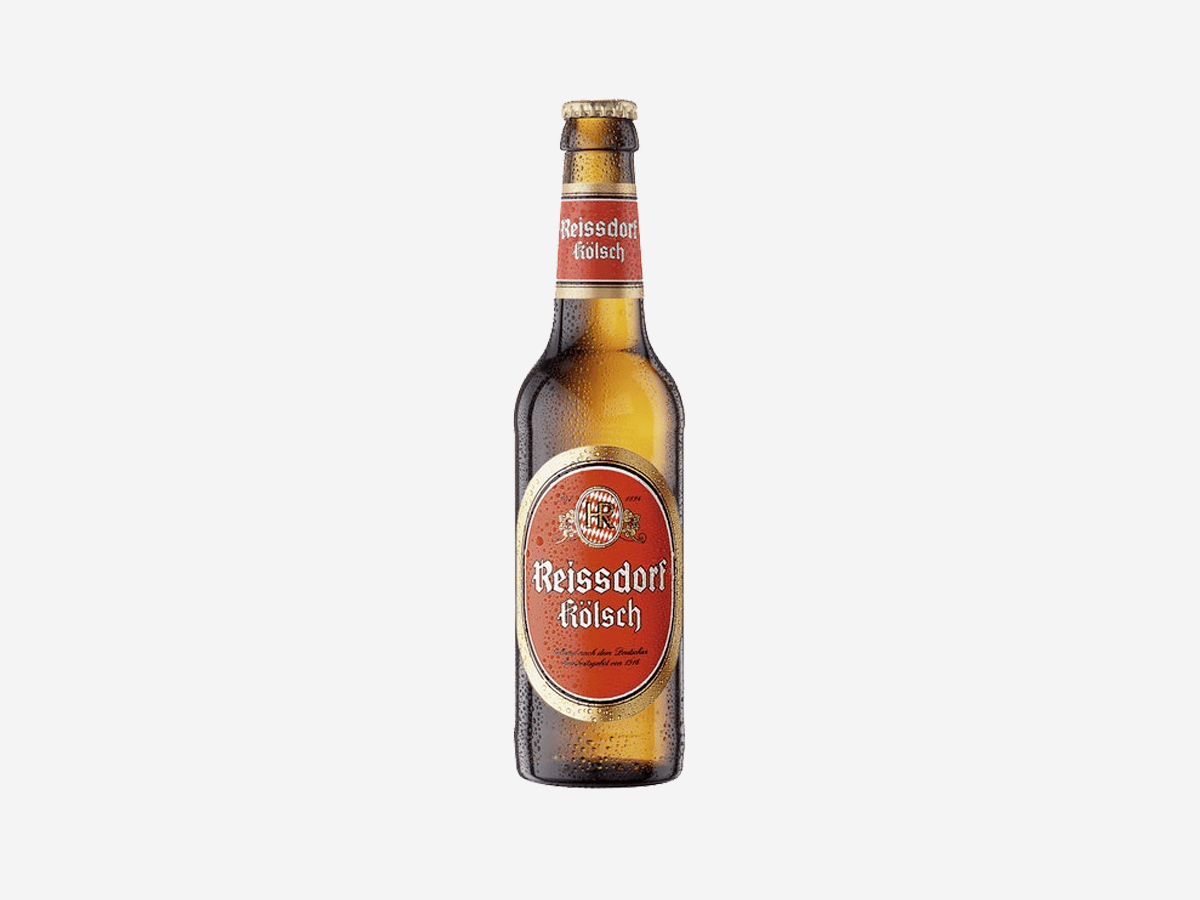
1. Reissdorf Kölsch
While the Czechia city of Pilsen is known as the birthplace of the wildly popular pilsner beer style, Germany (and Cologne in particular) is the birthplace of the crisp, easy-drinking Kölsch. And, in our opinion, one of the best available is the iconic Reissdorf Kölsch. This popular beer begins with a nose of freshly baked bread and ripe fruit before evolving into a palate of white grapes, bready malts, and lightly floral, earthy hops. It’s crisp, light, and always refreshing. One sip and it will find a permanent home in your refrigerator.
Size: 500mL
Alcohol Volume: 4.8%
Region: Cologne
Style: Kölsch
Buy it here (Beer Merchants) Buy it here (Reissdorf) Buy it here (Wine Searcher)
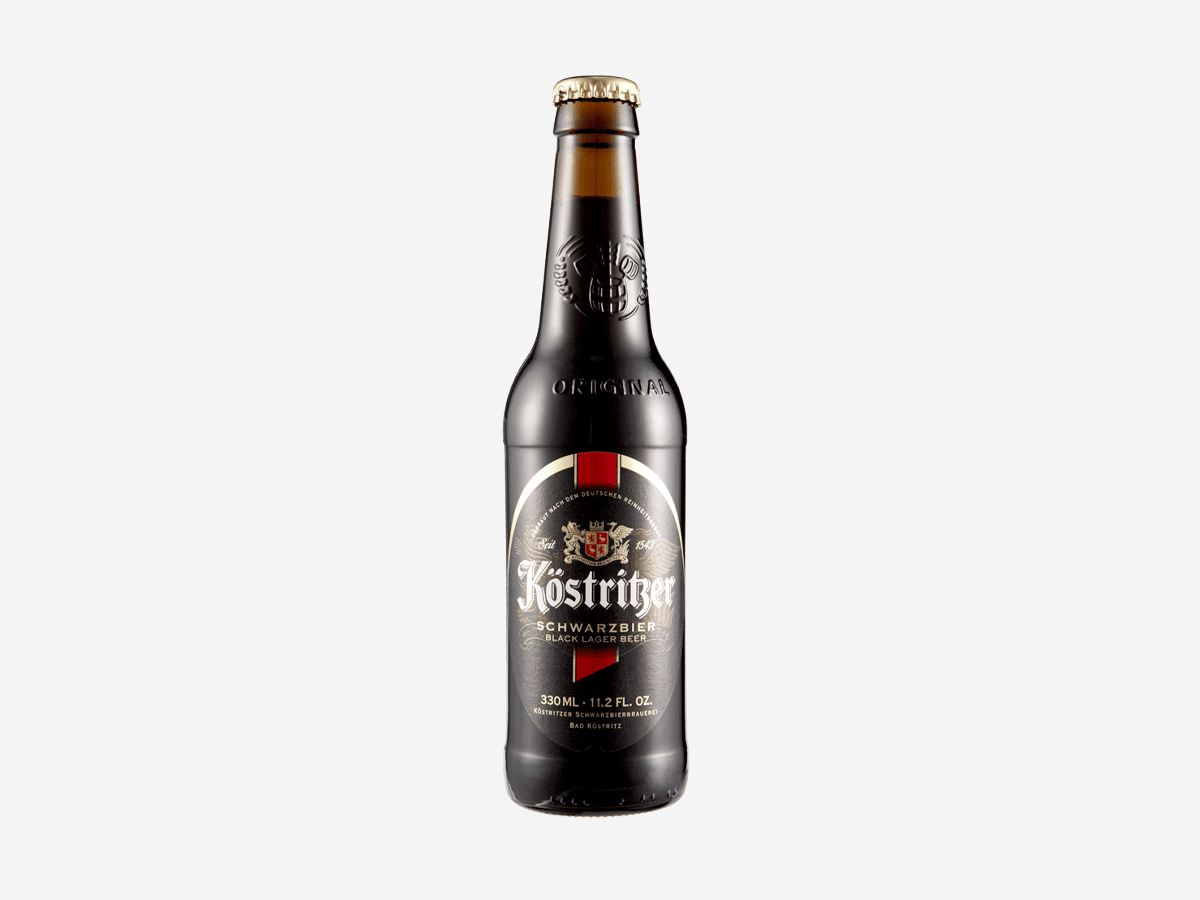
2. Köstritzer Schwarzbier
If you’re not an avid German beer drinker, you might not know what a Schwarzbier is. In technical terms, a Schwarzbier is a dark lager with roasted malt and sometimes a slightly memorable smoky flavour. This bottom-fermented dark beer is one of the most popular in Germany because of its flavour profile of freshly brewed coffee, dark chocolate, and roasted malts. It’s the bold, robust, warming beer you need on an unseasonably cool evening.
Size: 330mL
Alcohol Volume: 4.8%
Region: Greiz
Style: Lager
Buy it here (Dan Murphy’s) Buy it here (Bitburger) Buy it here (Köstritzer)
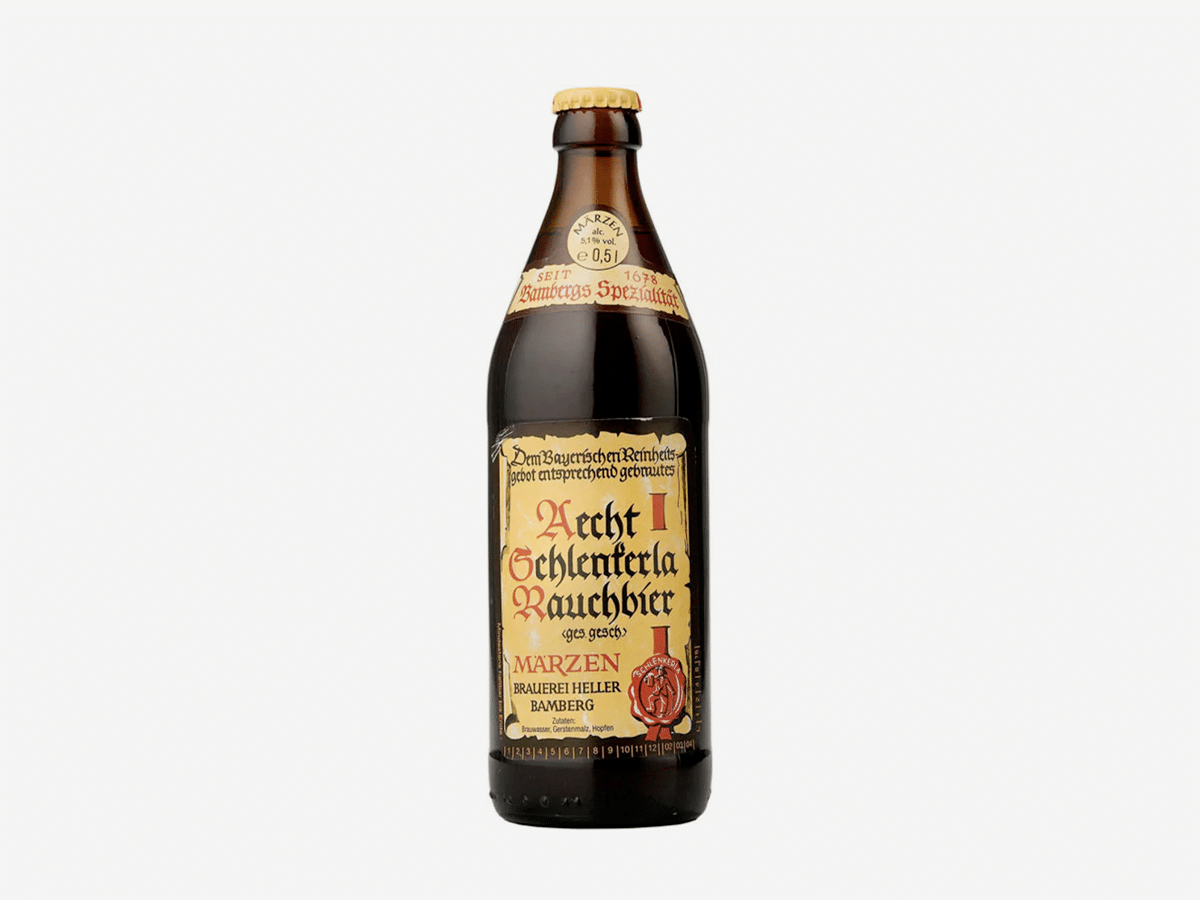
3. Aecht Schlenkerla Rauchbier
For the uninitiated, rauchbiers are dark lagers known for their robust smoky flavour thanks to being brewed with smoked malt. By far the most popular readily available rauchbier is Aecht Schlenkerla Rauchbier. Brewed for centuries in Bamberg, Germany Aecht Schlenkerla Rauchbier gets its roasted malt, treacle, caramel, brown bread, chocolate, and unique smoky flavour from the addition of barley malts that were smoked over beech wood. It’s a totally unique beer that needs to be sipped to be fully believed.
Size: 500mL
Alcohol Volume: 5.1%
Region: Bamberg
Style: Lager
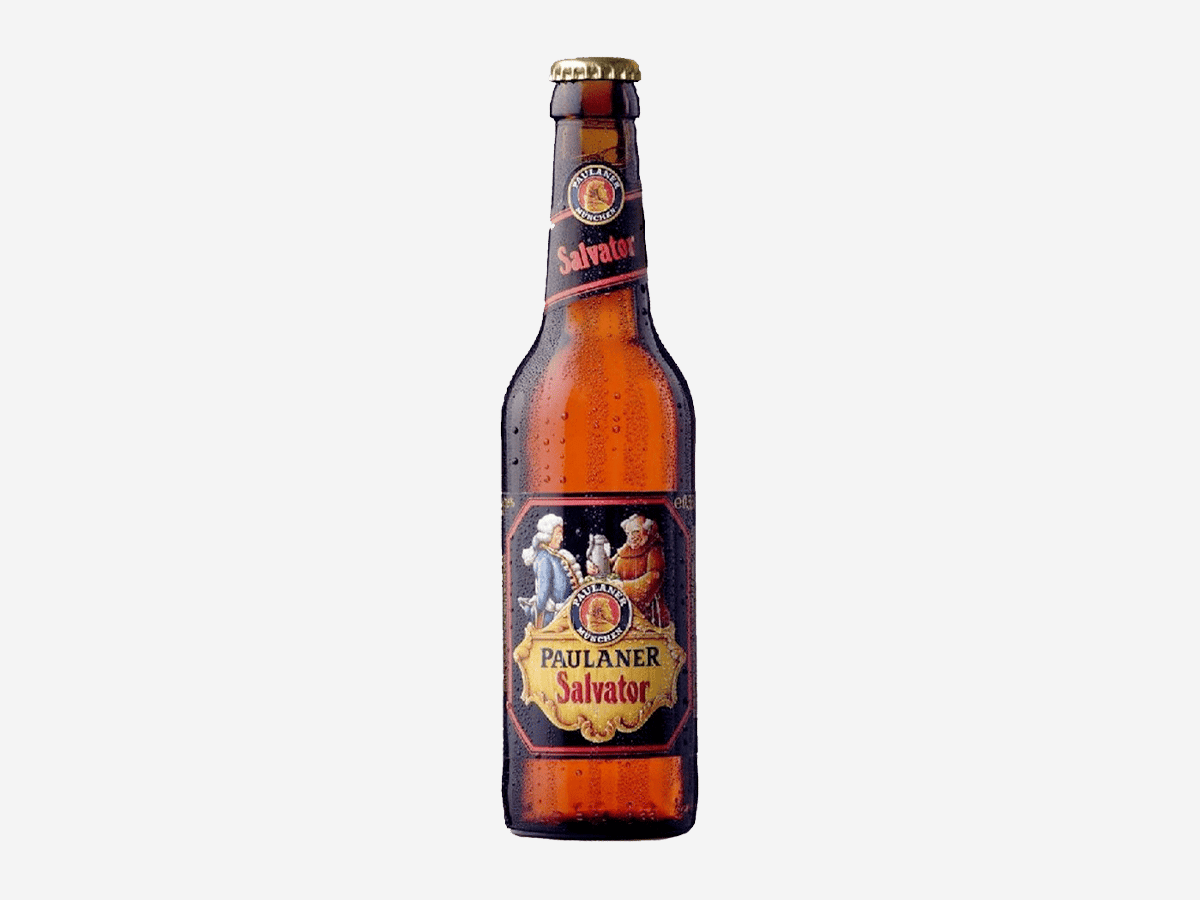
4. Paulaner Salvator
Popular among German beer fans, Paulaner Salvator is referred to it as “the father of all strong beers”. Brewed for more than 375 years, this bottom-fermented double bock is made with Pilsner malt and Munich malt. It gets its floral flavour from the addition of Herkules and Hallertauer Tradition hops. The result is a bold, highly complex beer with flavours of brown bread, raisins, candied nuts, toasted malts, molasses candy, and lightly floral, herbal hops that tie everything together in a neat, tidy package.
Size: 330mL
Alcohol Volume: 7.9%
Region: Bavaria
Style: Dubbel Bock
Buy it here (Dan Murphy’s) Buy it here (Paulaner) Buy it here (Beer Cartel)
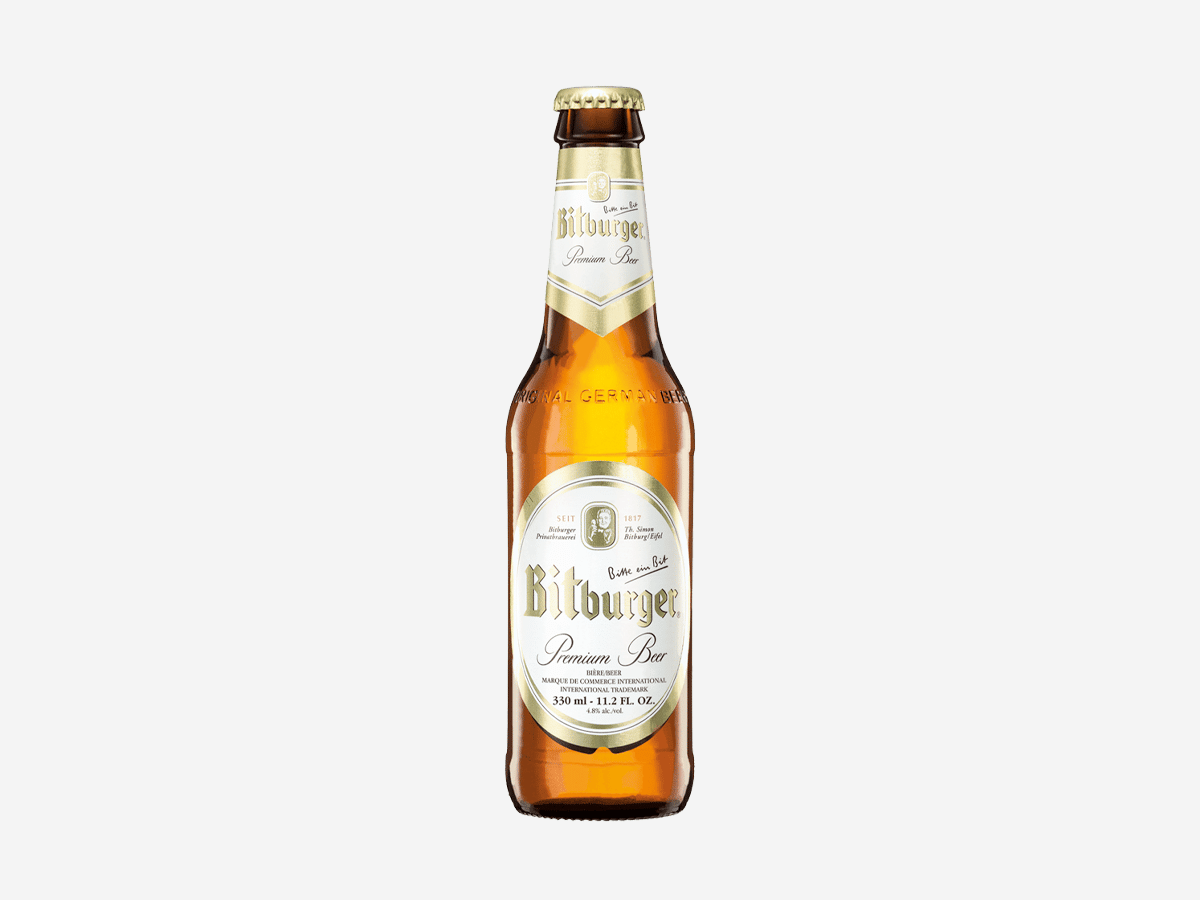
5. Bitburger Premium Pilsner
Even though it originates from Czechia, the pilsner is the most popular beer style in Germany. Bitburger, one of the most popular pilsners in Germany, has been brewed the same way since its creation in 1909. It’s known for its straw colour and crisp, easy-to-drink flavour profile featuring aromas of bready malts, citrus, and floral hops and a palate of freshly baked bread, cereal malts, citrus peels, and more floral, earthy, lightly bitter hops. This is a simple, no-frills beer that goes down easy every time.
Size: 330mL
Alcohol Volume: 4.8%
Region: Bitburg/Eifel
Style: Lager
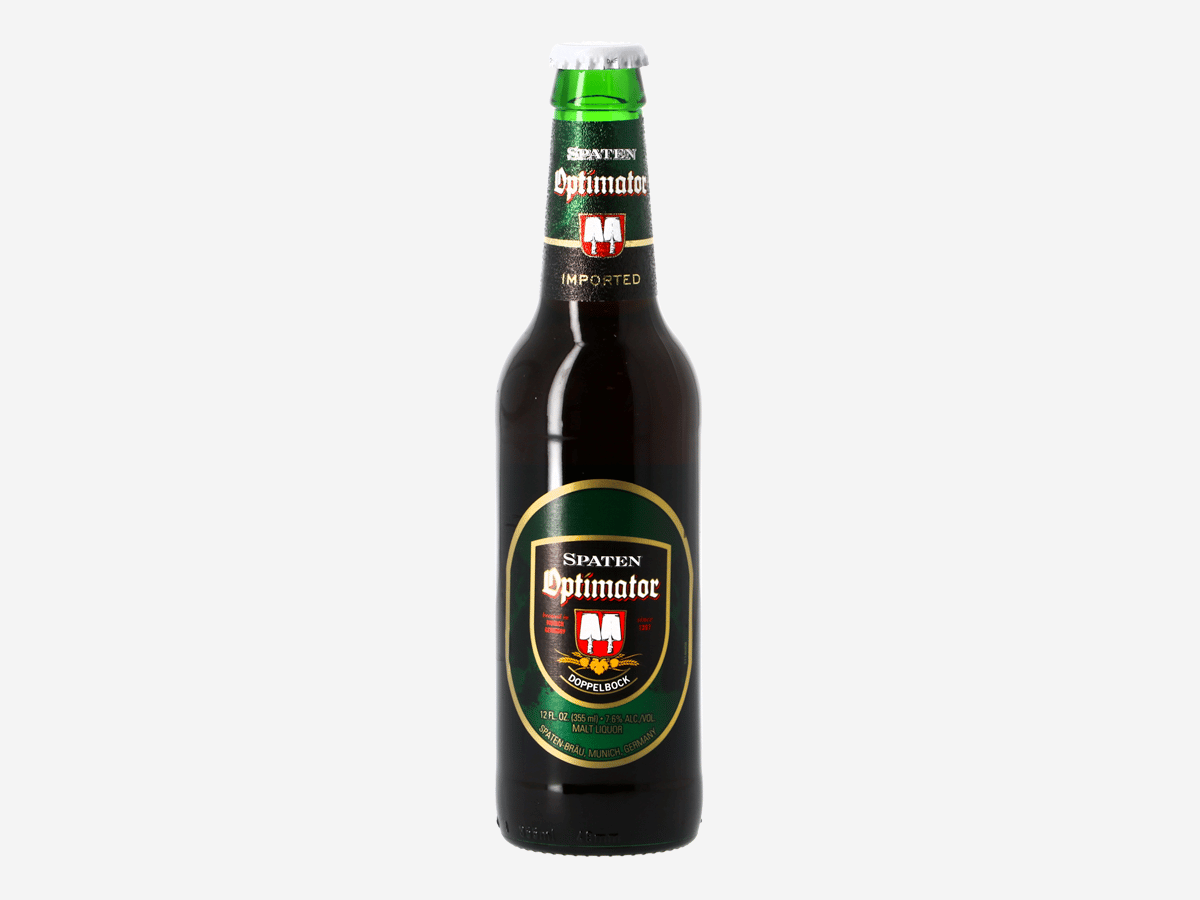
6. Spaten Optimator
Spaten is a big name in German beer and you can’t go wrong with any of its brews. But, in our opinion, the best choice is its boldly named Spaten Optimator. It’s a bottom-ferment double bock brewed with roasted malts. It’s also a robust 7.6 per cent ABV and carries aromas of toffee, fresh bread, and chocolate. The palate continues this trend with the addition of caramel and roasted malt flavours. It’s big, rich, and totally warming any time of year. It might not seem like a great beer for the summer months, but we like to keep this one in the fridge in case of an unseasonably chilly night or simply as a change of pace from lighter, lower ABV beers.
Size: 330mL
Alcohol Volume: 7.6%
Region: München
Style: Doppel Bock

7. Augustiner Edelstoff
This popular helles-style lager is known as much for its crisp, easy-drinking taste as it is for its simple, no-frills recipe of water, malt and hops. It’s offers up a well-balanced flavour profile that begins with aromas of freshly baked bread, light citrus zest, and floral, Noble hops. The palate continues this trend with sweet malts, cereal grains, brown bread, and floral, earthy, piney hops. The finish is dry, crisp, and leaves you craving more. It’s the kind of beer that pairs with backyard barbecues, yard games, and good times with friends and family.
Size: 500mL
Alcohol Volume: 5.6%
Region: München
Style: Helles-style lager
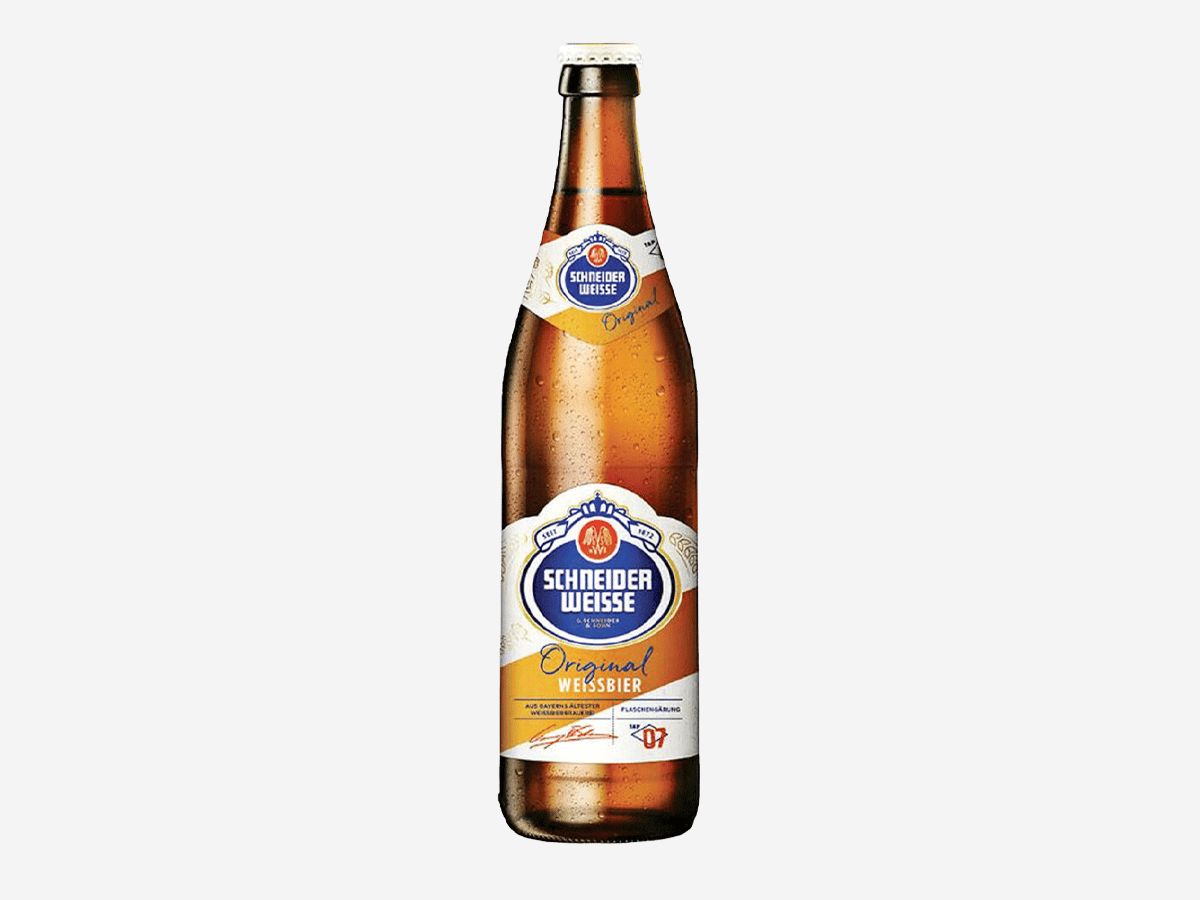
8. Schneider Weisse Original Weissbier
This 5.4 per cent hefeweizen-style beer is brewed with wheat malt and barley malt as well as Hallertauer Tradition and Hallertauer Herkules hops using open fermentation. It’s non-pasteurised, non-filtered, and loaded with flavours like sweet wheat, ripe bananas, and cloves. It’s hazy, cloudy, and incredibly flavourful. It’s the kind of wheat beer that you’ll drink once and then not want to try any others for a long time. Stock your fridge with Schneider Weisse Original Weissbier and you’re sure to have a great summer.
Size: 500mL
Alcohol Volume: 5.4%
Region: Bavaria
Style: Hefeweizen-style beer
Buy it here (Dan Murphy’s) Buy it here (Schneider Weisse) Buy it here (Beer Cartel)
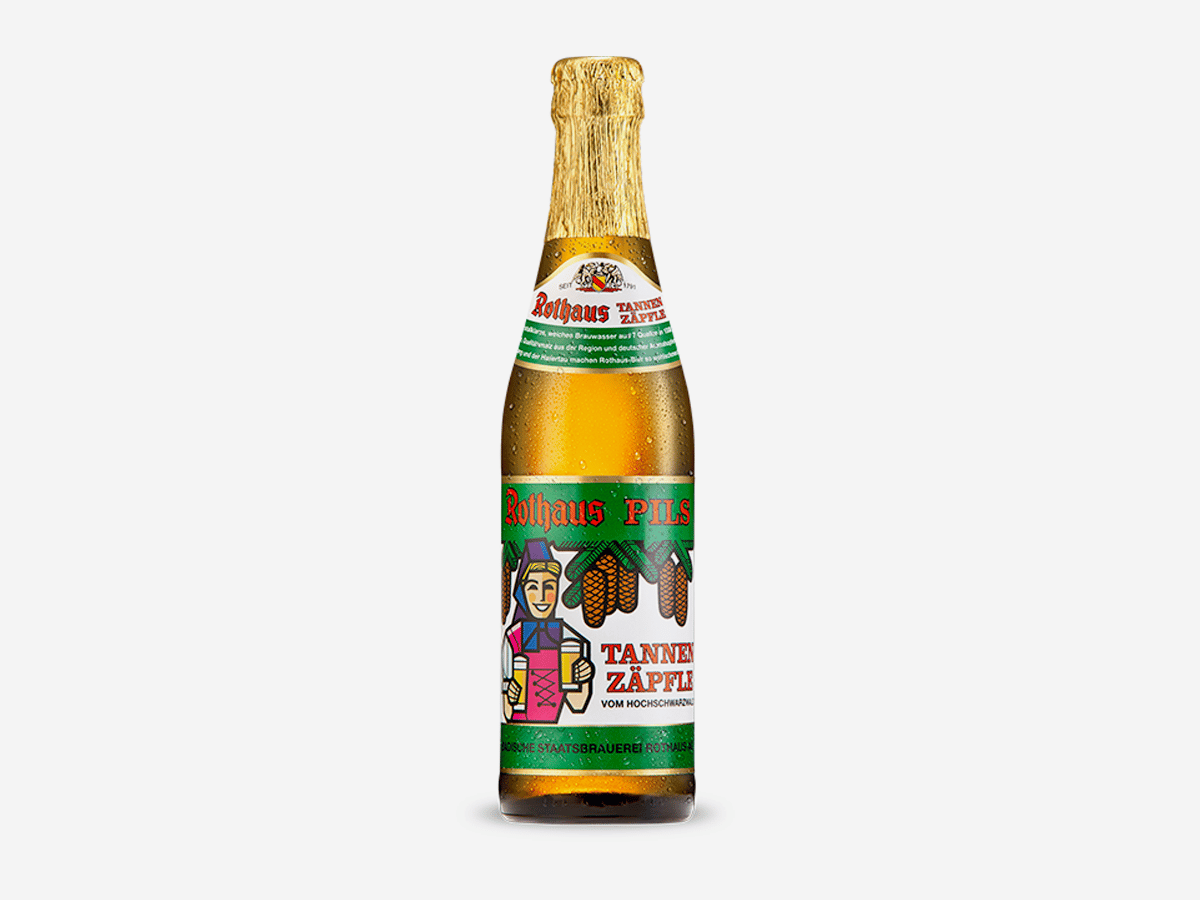
9. Rothaus Pils Tannenzäpfle
As we mentioned above, the pilsner is the most popular beer style in Germany. So why not drink what the Germans drink, right? Well, one of the most popular German pilsners is Rothaus Pils Tannenzäpfle. Brewed since 1956, this pilsner gets its beloved flavour from the addition of summer barley and Noble hops including Tettnang and Hallertau. It’s well-known for its crisp, well-balanced flavour profile featuring cereal grains, bready malts, and slightly spicy, floral, lightly bitter hops at the finish. In a sea of German pilsners, Rothaus Pils Tannenzäpfle is one of the best. It’s the kind of beer that will pair with almost any of your favourite foods.
Size: 330mL
Alcohol Volume: 5.1%
Region: Grafenhausen
Style: Lager
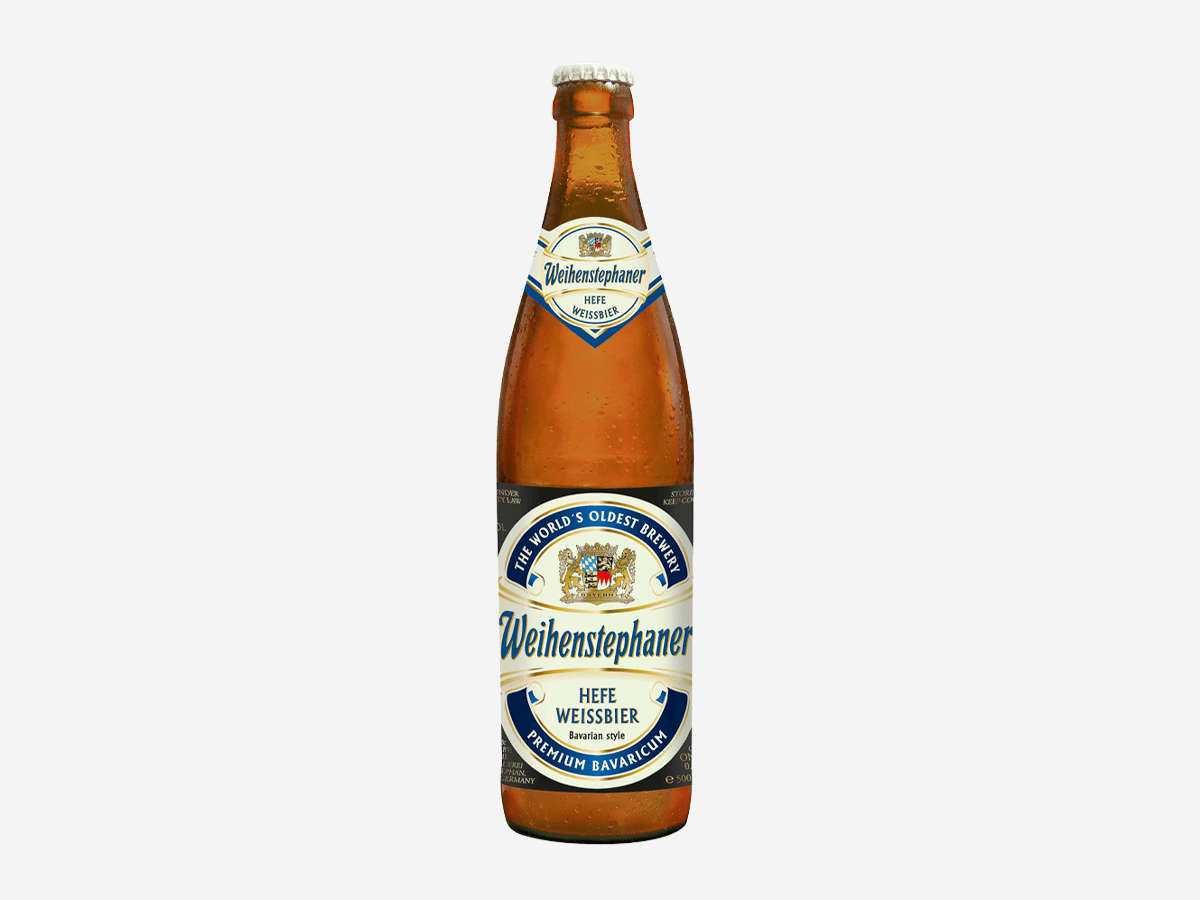
10. Weihenstephaner Hefe Weissbier
On top of the flavourful beer itself, one of the biggest appeals of Weihenstaphaner is its history. Touted as the longest continually operating brewery in the world, it can trace its genesis back to 1040 (yes, you read that right). This Bavarian staple makes myriad iconic beers, but we prefer its Weihenstaphaner Hefe Weissbier above all of its other offerings. This wheat beer starts off on the right foot with aromas of clove, bananas, and wheat malts. Drinking it reveals a complex flavour profile of cereal grains, wheat, cloves, and delicate, ripe bananas. It’s a beer you won’t soon forget.
Size: 500mL
Alcohol Volume: 5.4%
Region: Freising
Style: Wheat Beer
Buy it here (Dan Murphy’s) Buy it here (Weihenstephaner) Buy it here (First Choice Liquor)
What is German Beer?
For Germans, beer is more than just a refreshing beverage, it’s a way of life and you can attribute much of the country’s rich beer history to the Reinheitsgebot. For those unaware, the Reinheitsgebot is a set of unflinching rules and regulations about the brewing process in Germany. Adopted in Bavaria back in the 1500s, the Reinheitsgebot states that to be considered a beer in the country, the only ingredients allowed to be used are water, barley, and hops. The law doesn’t mention yeast, but obviously, this is a necessary ingredient as well. This also means that wheat beers, although wildly popular in Germany, don’t follow the strict rules.
Obviously, this is a centuries-old set of rules, and not all modern German brewers feel the need to follow it so strictly. That’s why you’ll find all types of different beer styles coming out of Germany. But part of the appeal of German beers is the connection to its traditions.
Types of German Beer
While the main types of German beer are found readily across the globe, it’s important to understand the lesser-known releases. Some are more finely tuned for the acute drinker, while others are good year-round. Here is a brief rundown of German beer types.
- Pilsner/Helles – The most common type of German beer, Pilsners or Helles are characterised as bitter with a nice hit of spicy, floral hops. The German-styled takes tend to be lighter and serves as the original inspiration for your common light-beer options like Budweiser and Pabst Blue Ribbon.
- Maibock – Amber and brown in colour, this beer type is usually very strong and malty. It carries an ABV of around 6% and is most commonly produced in Munich around springtime (mai means May in German).
- Doppelbock/Eisbock – A stronger, darker version of the Maibock, these beers are the hallmark of Munich’s Paulaner brewery. They are very rich in flavour and are very intense.
- Kölsch – One of the most famous German beer types ever created, Kölsch is a delicate, fruity release with a mellow pale malt finish.
- Dunkel – Amalty lager with an amber-brown colour, Dunkels are often enjoyed around Oktoberfest. They are crafted using bready Munich and Vienna malts, giving the beer a deep hop-driven flavour. If you love a yeast-forward beer, this one is for you.
- Berliner Weisse – A tart wheat beer that has a unique sour characteristic derived from the fermantation process. Similar to a classic craft sour, but with a more mellow finish
- Gose – Similar to a Berliner Weisse, but brewed with coriander seed and salt. These beers are traditionally cloudy, tart, and spicy.
- Schwarzbier – The darkest of all German lagers, Schwarzbier is surprisingly light in taste. While they might look heavy, these beers generally arrive around 5% ABV and can be quite delicate on the palate.
- Rauchbier – A rich, smoky beer that is crafted using malt that has been smoked over the flames of a beechwood-fueled fire.
- Wheat Ales – Germany is famous for its wheat beers, most notably the Hefeweizen, Dunkelweizen and Weizenbock varieties. These releases have a cloudy appearance and a dark fruit-like flavour that lingers in the mouth.
- Altbier – Hailing from Düsseldorf, Altbierermented is fermented cooler than most ales, producing a rich, bready malt character.
Things to Consider for German Beer
If you’ve never put much thought into German beers, there’s a lot to consider before you buy. Some German beer types are more forgiving than others and sourcing a good brew can often be difficult outside of Bavaria. Here are some things to keep in mind if you’re attempting to score a new German brew.
- Reinheitsgebot – The strict set of regulations that govern the production of beer in Germany, the Reinheitsgebot stipulates that the only ingredients allowed to be used are water, barley, and hops. As a result, German beer tends to be a bit more ‘natural’ or ‘raw’ in flavour.
- Price – While you may be able to find some cheap German beers, many of the best brands will incur some form of import tax. Don’t be surprised if you see the top releases on this list go for a bit more than your average carton.
- Availability – Similarly, beer production at some of the smaller facilities in Germany can mean supply is relatively low, particularly when being imported. It’s important to note that supply can often be irregular for some of the more boutique releases.
Alternatives to the Best German Beers to Drink Now
If you’re not quite aboard the German beer train, or you’re just looking to find out which international brew tickles your fancy, why not check out some of our other beer articles?
Best Beers in Other Countries
Best Beers According to Strength
- Best Non-Alcoholic Beers to Drink Right Now
- Best Australian Mid-Strength Beers
- Strongest Beers in the World For Serious Brew-Snobs
Beer Glass Guides
You’ll also like:
- Best Pale Ale Beers to Crack Open
- 34 Beers You Must Try Before You Die
- Best Pilsner Beers to Drink Right Now
General FAQs
Pilsner is the most popular beer in Germany. Originating from the Czech town of Pilsen, the light-golden beer with the dry hoppy aroma is very popular in the North, West and East of Germany.
Only beer from Munich breweries may be served on the Wiesn, as custom dictates. As a result, Augustiner, Hacker-Pschorr, Hofbräu, Löwenbräu, Paulaner, and Spaten are the only beers served at Oktoberfest.


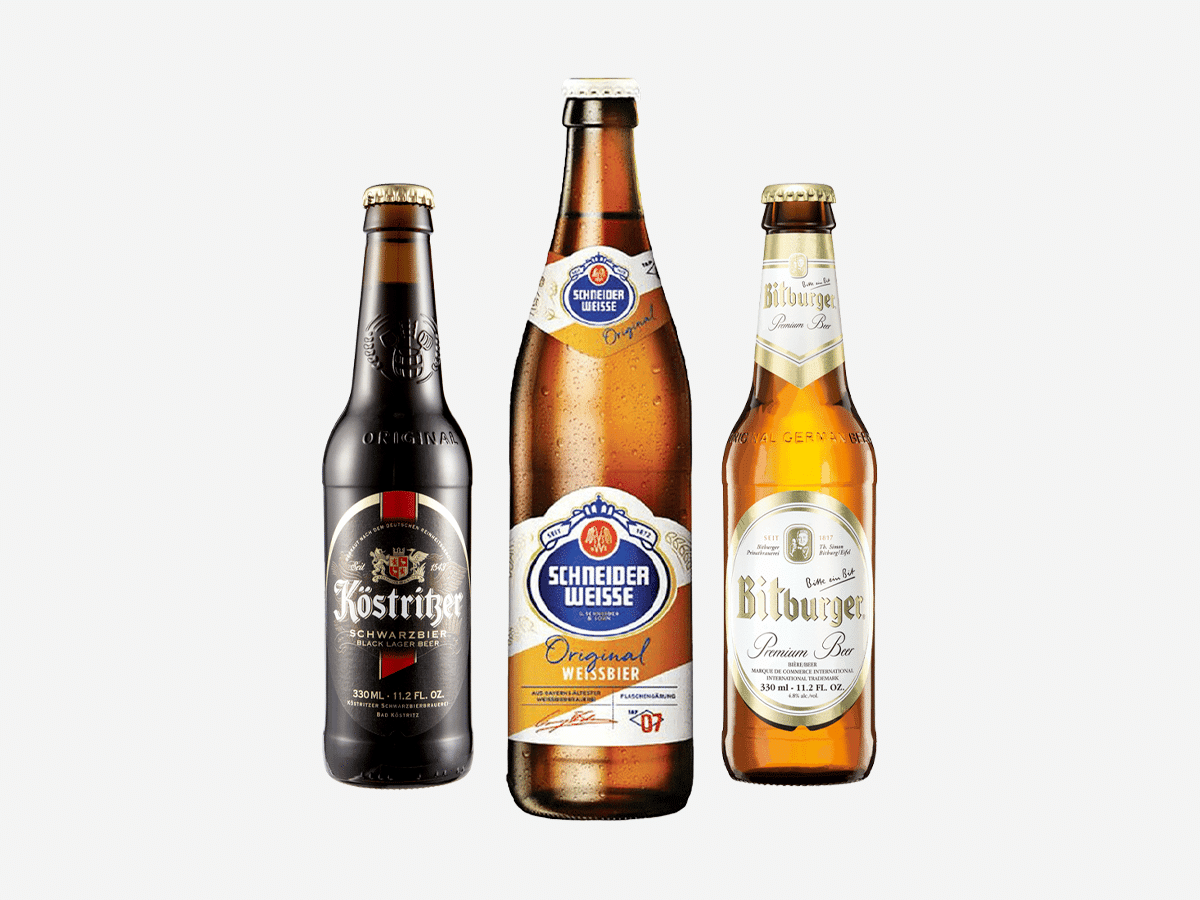































Comments
We love hearing from you. or to leave a comment.